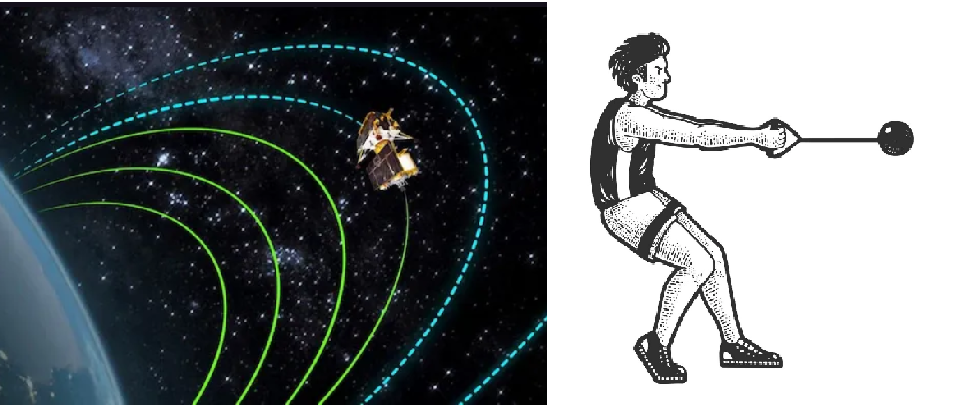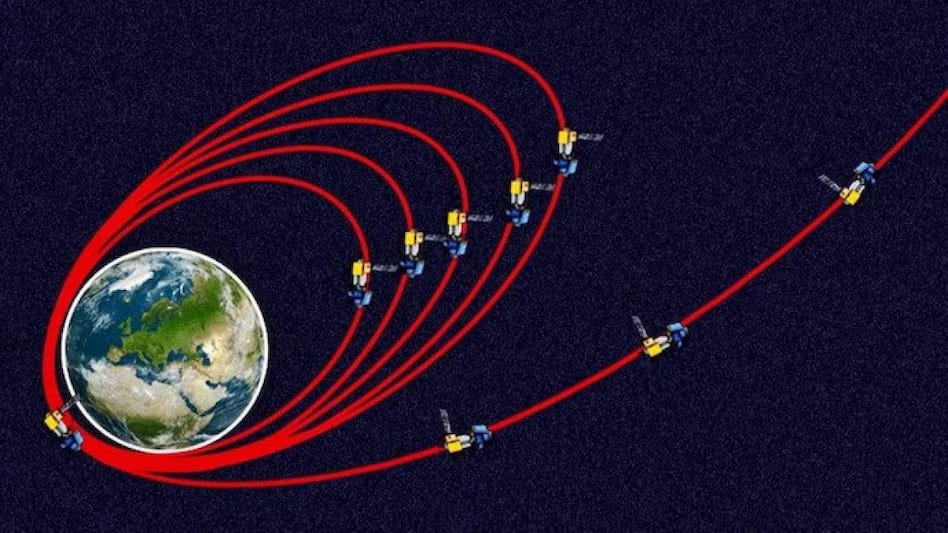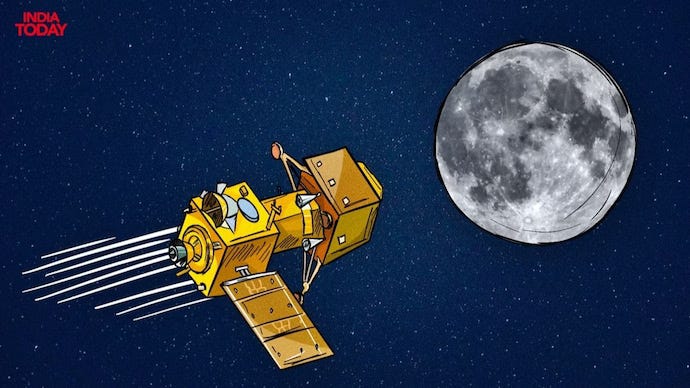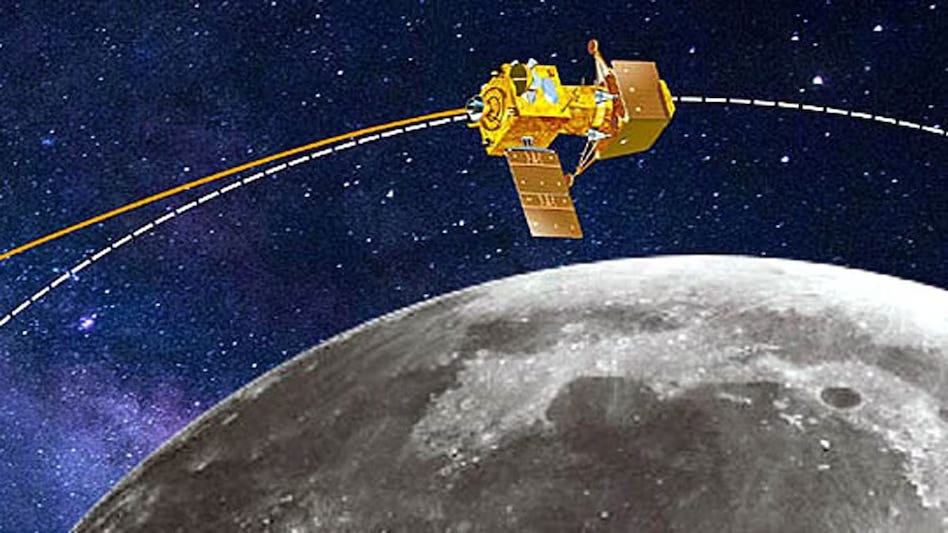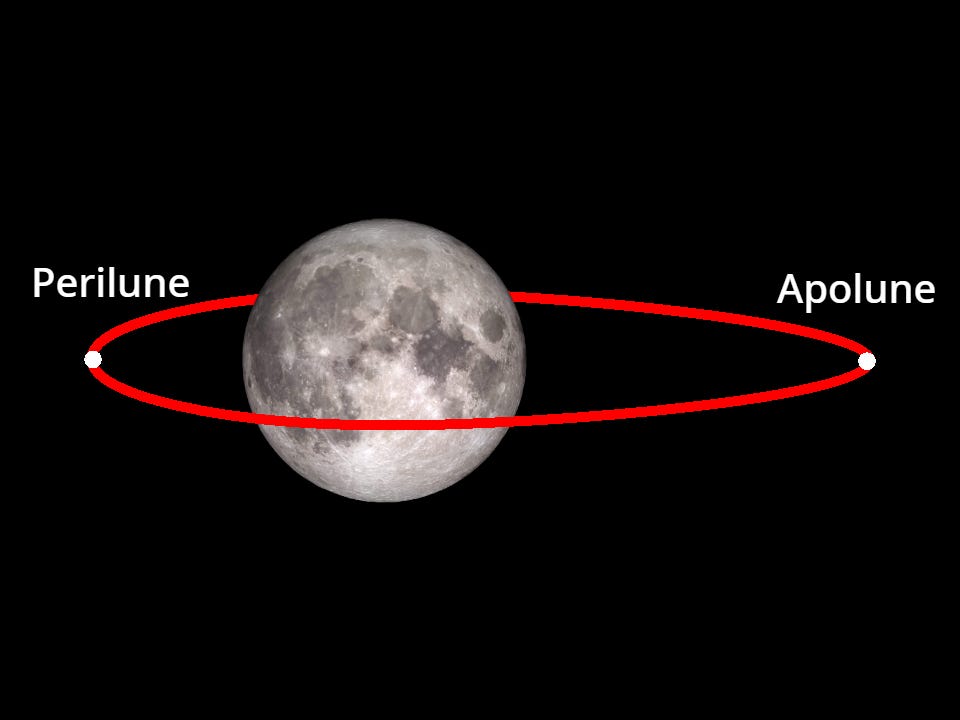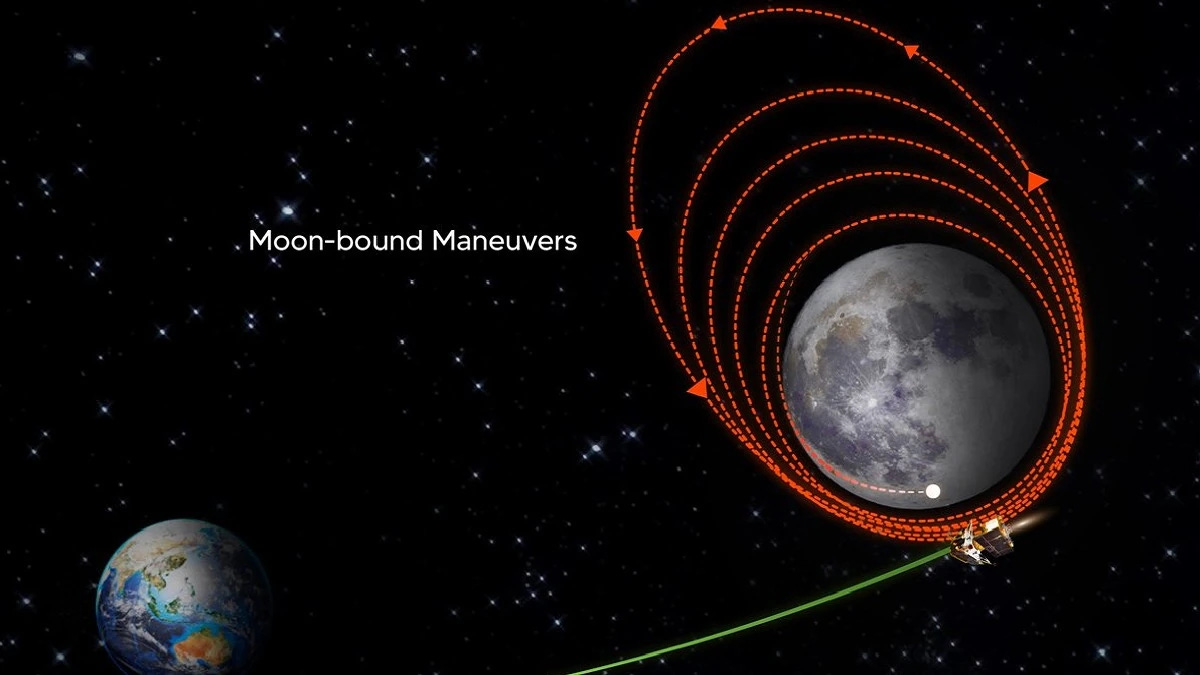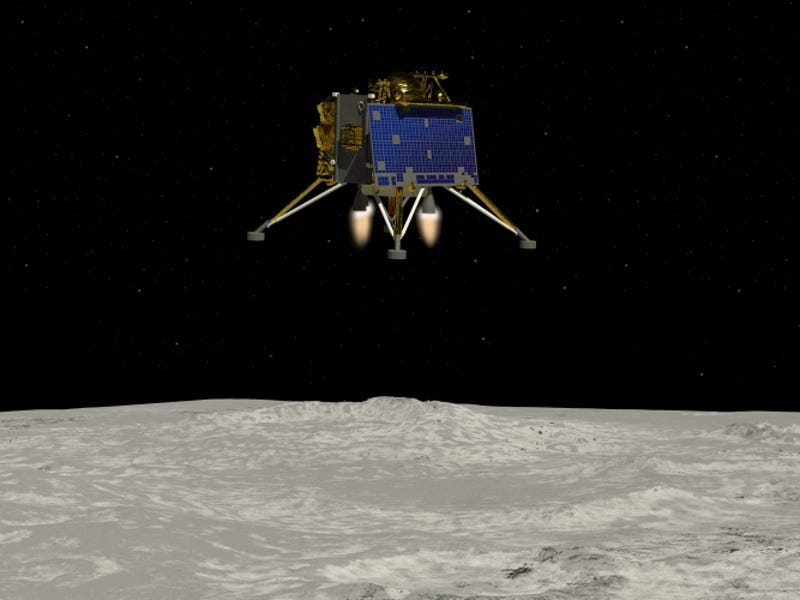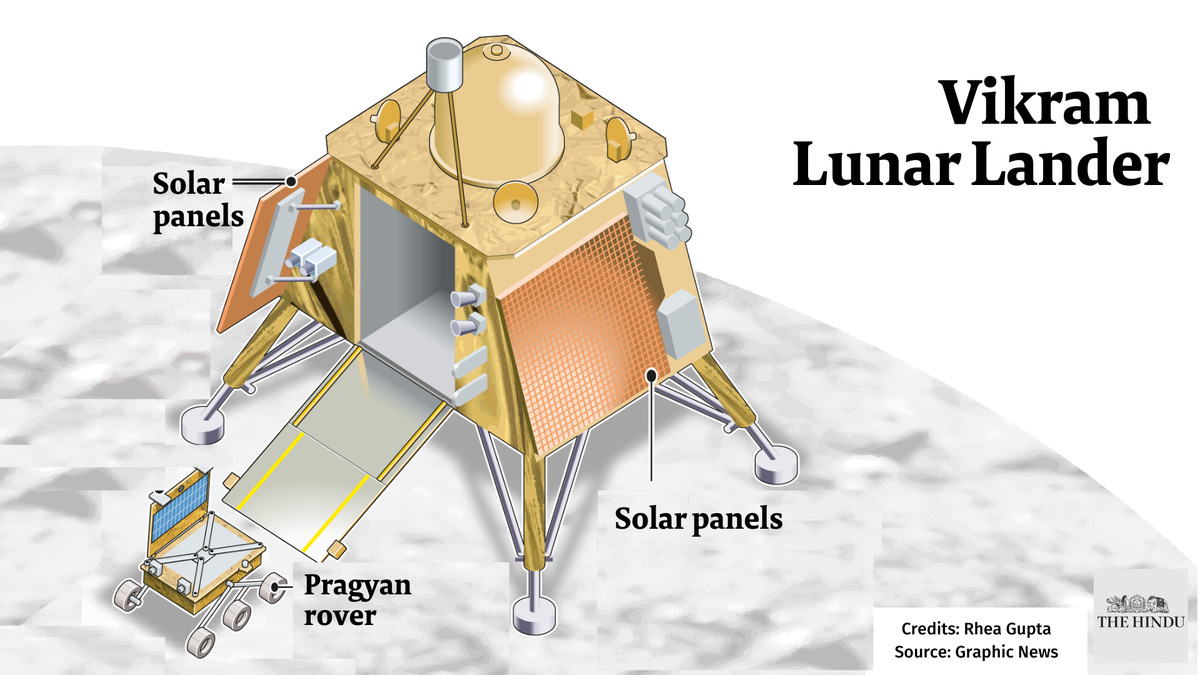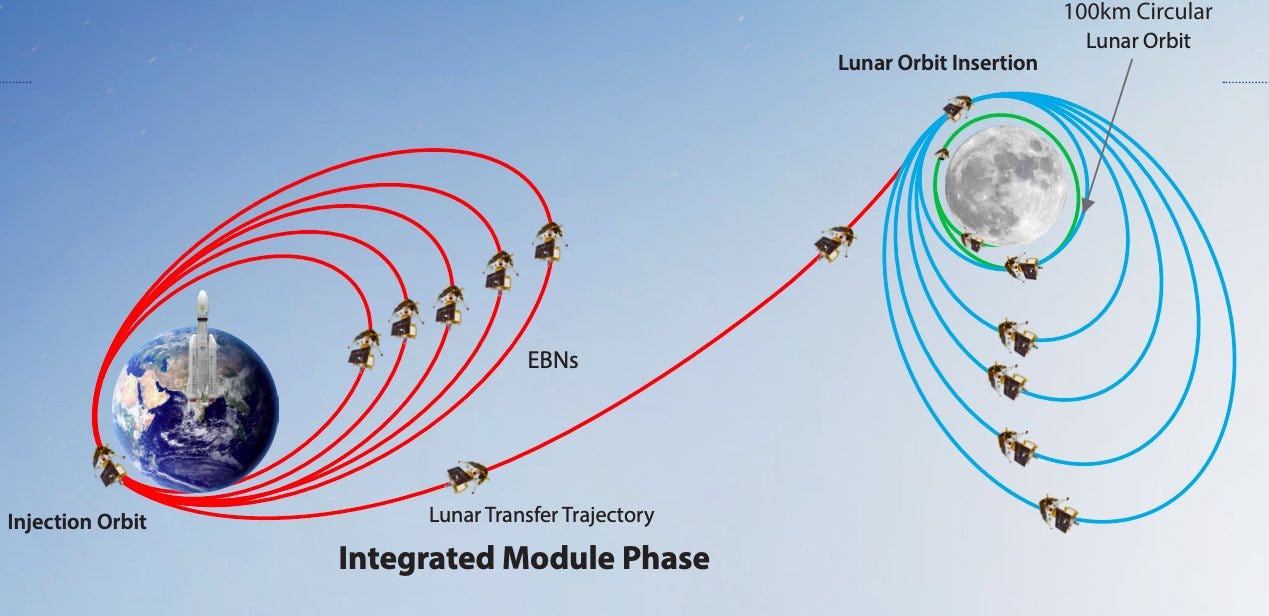Understanding complex Chandrayaan-3 terms
Explore the meaning of terms like 'orbit raising maneuver' and 'trans lunar injection'
You might have heard about ISRO’s Chandrayaan-3 mission lately and you might still be hearing a lot about it right now and reading mission updates on the news. You might have also stumbled upon some hard-to-understand terms like ‘Trans-lunar-injection’ or ‘orbit raising maneuver’. This post is going to tell you what they mean.
Orbit Raising Maneuver
The Chandrayaan-3 spacecraft doesn’t directly go to the Moon and land, it goes through many complex maneuvers. Before the craft goes to the Moon, it rotates around the Earth for a couple of days while gradually increasing its orbit height. When an orbit height is increased, it is called an orbit-raising maneuver. This is done to take advantage of the Earth’s gravity and use it to catapult the craft toward the Moon. It is like a hammer thrower spinning the heavy hammer faster and faster before suddenly releasing it. Chandrayaan-3 has 5 orbits around the Earth, taking 17 days for all 5 orbits at varying levels. The 5th and final orbit is called the lunar transfer orbit.
Trans Lunar Injection (TLI)
This is the maneuver where the spacecraft is injected into a path toward the Moon from the Earth orbit, after completing all its orbit-raising maneuvers. During this maneuver, the craft is injected into the Lunar Transfer Trajectory (see next). It is important to keep in mind that this does not mean that the craft is entering the lunar orbit.
Lunar Transfer Trajectory (LTT)
After completing all the orbit-raising maneuvers, the path taken by the craft from the Earth to the Moon is called the Lunar Transfer Trajectory. The craft enters into the lunar orbit from the lunar transfer trajectory. This maneuver is called the Lunar Orbit Insertion (see next).
Lunar Orbit Insertion
In this maneuver where the spacecraft is inserted into the lunar orbit from the LTT. The craft will then keep orbiting for a few days so that it can perform a successful soft landing on the Moon. This maneuver requires slowing down the spacecraft and waiting for the Moon to pull it into lunar orbit. There are a total of 5-6 different orbits, each successive orbit gets closer to the Moon.
Apolune and Perilune
Apoclause and periclase are 2 general terms for the farthest and nearest point in the orbit of a body. For specific planets and moons, we use different terms. For example, for Earth, we call it the apogee and perigee but for lunar orbit, we call it apolune and perilune.
The apolune is the point farthest from the Moon during an orbit and the perilune is the point in its orbit when it is closest to the Moon. These 2 points play an important role in the orbit correction of the spacecraft. When orbiting around the Moon, the spacecraft fires its thrusters in the opposite direction to decrease the orbiting altitude. This is called retrofiring, similar to pushing a moving shopping cart in the opposite direction to slow it down. Retrofiring is typically done when the spacecraft is at the perilunar point. When a spacecraft does this, it is called an orbit reduction maneuver.
Orbit Reduction Manuever
This maneuver is performed by the craft in the lunar orbit. This is similar to the orbit-raising maneuver except that it is when the spacecraft is orbiting the Moon. Just like the spacecraft orbits the Earth before launching itself towards the Moon, it also orbits around the Moon before finally landing on it. This time, instead of going farther and farther, it goes closer and closer to the Moon. There are about 5-6 lunar orbits in total and when the spacecraft shifts to each orbit, it is called an orbit reduction maneuver.
Lander Descent Phase
This refers to the stage where the lander (called Vikram), carrying scientific instruments and equipment, begins its controlled descent from its lunar orbit to safely land on the Moon's surface.
Soft Landing
Soft landing involves carefully controlling the lander's descent to ensure it touches down gently on the lunar surface, avoiding damage to the spacecraft and its scientific instruments. This process is completely automated. This means that nobody can do much to help the craft at this phase. It has to fire the thrusters at the precise second, make an accurate scan of the lunar surface, and gently land on the Moon. This is why it is referred to by experts as the “15 minutes of terror” where anything could go wrong at any second.
Lunar Surface Operations
After landing, this phase involves deploying the rover (Pragyaan) and other scientific equipment to explore and conduct experiments on the Moon's surface.
Hope this post has helped you finally understand the complex Chandrayaan-3 mission terms. Here is the overall view of the path taken by Chandrayaan from its launch till the landing on the Moon:


